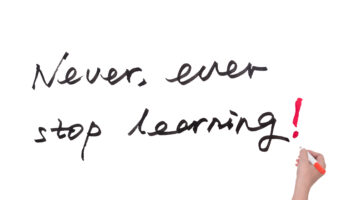Erin DelRegno
As teachers, you won’t learn anything about the children in your classroom or about their developmental needs if you are going to do all the talking. You are there to guide children’s learning, not to give them all the answers, or ask them questions that they already know the answer to. As assessors, we hear teachers ask more close-ended questions to children when we are observing in classrooms. There are times when the children have been asked what color or shape something was so many times in a 3-hour period, but nothing else was ever asked to them. Children are learning so much more than just these simple concepts.
So, what is the difference between close-ended and open-ended questions and how can you practice and expand how you talk to children on a regular basis?
What are close-ended questions?
Close-ended questions are answered with a simple yes/no, a single word, or a short, specific piece of information. These types of questions can be beneficial as infants and toddlers are beginning to learn and use simple language, and they do give you facts and information. However, they are easy and quick to answer, and as close-ended questions limit the response options, these questions involve children much less than open-ended questions.
Examples of close-ended questions:
- What color is your playdough?
- What shape is that block?
- What does the pig say?
- What part of your body helps you smell?
- Is it sunny or rainy outside today?
- Who writes the words in the book?
- How many wheels does the car have?
- Can you name a word that starts with the letter “C”?
- What is your doll’s name?
- What number comes after five?
- What is the opposite of fast?
What are open-ended questions?
Open-ended questions do not expect a particular answer and can be answered in various ways. Open-ended questions require more thought and allow for original, unique responses. These types of questions encourage children to share their ideas, stimulate language use, promote critical thinking and reasoning skills, encourage creative thinking, and start discussions/conversations to enhance learning.
Examples of open-ended questions:
- What do you think the book will be about? Why?
- What do you think might happen next?
- How is this dinosaur alike/different than this one?
- How do you know it’s a triangle?
- Why are you patting the baby doll’s back?
- Why do you think they are scared?
- What are some things that make you scared?
- What do you think would happen if we took this block out to make a doorway?
- Why did you decide to put the triangle-shaped block on top?
- You want to have a picnic; how are you planning to do that?
- What could you do to make the water wheel turn slowly?
How do I get started asking more open-ended questions?
Using more open-ended questions with children takes some practice. Luckily, if you are used to asking more close-ended questions, they can be used as a starting point. If you find yourself asking a close-ended question, try following up with an open-ended question. Below are some examples of close-ended questions and some follow-up questions that will encourage more language from the children and may begin a conversation and keep the activity moving forward:
| Close-ended questions | Follow-up open-ended questions |
| Are you making cupcakes?
|
What ingredients will you use? How do you make them? (can ask about steps taken to include math) |
| Do you have a pet? | What does your pet look like? Tell me about them. |
| When is your birthday? | How do you celebrate your birthday? What items are used for decorations? |
| Did your building fall over? | Why do you think that happened? How can you build it different this time to keep it from falling down? |
* To help you get started, create a list of generic open-ended questions/question starters and post them in your classroom centers. As you are interacting with children during play, you can ask these questions until this becomes more natural for.
The most important thing to remember when you are asking children these questions – Don’t ask the question and then immediately answer it yourself. Be patient and wait. Give them time to process and think about it. Then, when they answer, listen and respond in a way that shows you are interested in what they have to say. This may take some time to get used to but remember that the children are also learning how to answer these questions and are becoming comfortable with this themselves.
And don’t be afraid to ask challenging questions! The children will give more meaningful and complex answers, and if the children are unsure, or the answer they give doesn’t make perfect sense, that is a teachable moment. You can ask follow-up questions, provide them with more information, and you can build your knowledge together when more understanding is needed. By asking open-ended questions, children will become more engaged and curious during activities and you will enjoy the valuable ways they contribute to activities and discussions.
Additional Resources:
Teacher Tips: Asking Open-Ended Questions
NAEYC Webinar: Inspiring Higher-Level Thinking in Young Children
Video of a teacher using open-ended questions with children: Higher Order Thinking




